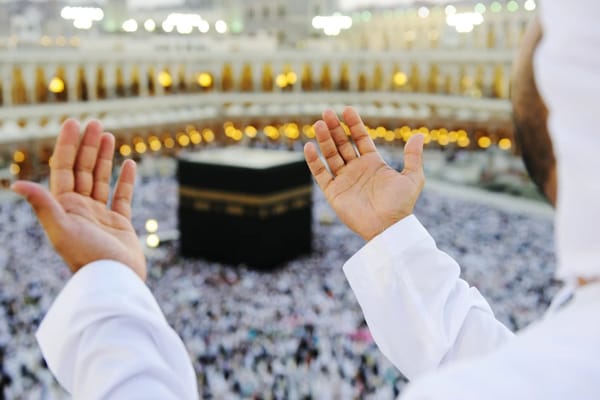Best Time to Perform Umrah: A Comprehensive Guide
Choosing the best time to perform Umrah depends on personal preferences, weather conditions, and specific events in the Islamic calendar. Saudi Arabia experiences a desert climate, with hot summers and mild winters, making certain times of the year more favorable for this spiritual journey. Below is a detailed breakdown of the best times to perform Umrah, considering seasons, events, and practical tips. The Umrah Ventures guide will also help you find cheap Umrah deals and understand the differences between Hajj and Umrah.


Seasons in Saudi Arabia
Saudi Arabia has four distinct seasons, each offering unique experiences for Umrah pilgrims. Understanding these seasons can help you plan your journey effectively.
Summer (June, July, August)
Weather: Summers are extremely hot, with daytime temperatures reaching up to 115°F (46°C). Nights are relatively cooler but still warm.
Considerations: Performing Umrah during summer can be challenging due to the intense heat, especially for elderly pilgrims or those with health conditions. However, all Umrah rituals are performed indoors in Masjid al-Haram, which is air-conditioned, making it manageable.
Stay hydrated, avoid outdoor activities during peak heat, and plan Ziyarat (visits to holy sites) during cooler parts of the day. Look for cheap Umrah deals during this off-peak season to save on costs. Book your pacakage with Umrah Ventures cater all your prefrences.
Winter (December, January, February)
Weather: Winters are mild and pleasant, with daytime temperatures ranging from 46°F (8°C) to 68°F (20°C). January is the coldest month, while February may experience light rainfall.
Considerations: Winter is considered the best time for Umrah due to the comfortable weather. It is also a peak season, especially during December, as many pilgrims combine their journey with Christmas and New Year holidays.
Book your Umrah package with umrah ventures well in advance, as demand is high during this period. For those planning a Hajj pilgrimage, winter is also a good time to explore the holy cities before or after Hajj.
Spring (March, April)
Weather: Spring is short but pleasant, with daytime temperatures ranging from 80°F (27°C) to 90°F (32°C). Nights are cooler, requiring light warm clothing.
Considerations: Spring is ideal for families, as school holidays often coincide with this season. The weather is moderate, making it suitable for both Umrah rituals and Ziyarat.
If traveling with family, ensure children are prepared for the varying temperatures between day and night. Use a step-by-step Umrah guide to make the journey smoother for everyone with Umrah ventures
Autumn (September, October, November)
Weather: Autumn offers moderate temperatures, ranging from 73°F (23°C) to 86°F (30°C). September can still feel like summer, but by November, the weather becomes cooler and more comfortable.
Considerations: November is particularly favorable for Umrah, as the weather is neither too hot nor too cold. It is also less crowded compared to peak seasons like Ramadan or December.
Tip: Autumn is a great time for those seeking a balance between pleasant weather and fewer crowds. Look for Ramadan Umrah deals early if you plan to perform Umrah during the holy month.
Special Events in the Islamic Calendar
Certain Islamic events make specific times of the year particularly rewarding for performing Umrah.
Ramadan
Significance: Ramadan is the holiest month in the Islamic calendar, and performing Umrah during this time is highly rewarding. According to Islamic teachings, Umrah in Ramadan is equivalent to Hajj in terms of spiritual reward.
Considerations: Ramadan is a peak season with large crowds and higher costs for Umrah packages. However, the spiritual atmosphere in Masjid al-Haram and Masjid an-Nabawi during this month is unparalleled.
Book your Ramadan Umrah packages with umrah vemtures several months in advance to secure better rates and accommodations.
Hajj Season
Significance: Hajj is the annual pilgrimage performed during the Islamic month of Dhul-Hijjah. Umrah can be performed alongside Hajj in the form of Hajj al-Tamattu or Hajj al-Qiran.
Considerations: Umrah cannot be performed during the five days of Hajj. However, the period before and after Hajj is an excellent time for Umrah, as the holy cities are less crowded.
If planning Umrah during the Hajj season, avoid the five days of Hajj and ensure your travel dates align with the Islamic lunar calendar. For those curious about the cost of Hajj from the UK, it’s advisable to consult with trusted travel agencies for accurate pricing.


Conclusion
The best time to perform Umrah ultimately depends on your personal circumstances, including physical health, financial readiness, and spiritual goals. While winter and spring offer the most comfortable weather, Ramadan provides unparalleled spiritual rewards. Autumn is ideal for those seeking moderate weather and fewer crowds, while summer is feasible for those who can handle the heat.
Regardless of the season or event, every moment spent in the holy cities of Makkah and Madinah is a blessing. Prioritize your intention and readiness, and remember that the journey of Umrah is a profound spiritual experience that transcends time and weather conditions.
For a seamless experience, follow a step-by-step Umrah guide and consider cheap Umrah deals to make your pilgrimage affordable. Whether you’re performing Umrah alone or planning a Hajj and Umrah combination, proper preparation and research will ensure a memorable and spiritually fulfilling journey.


